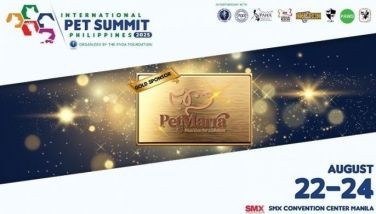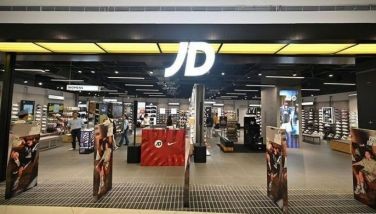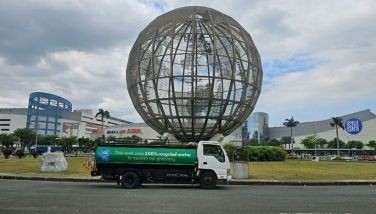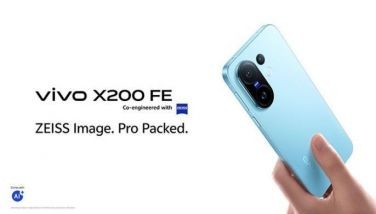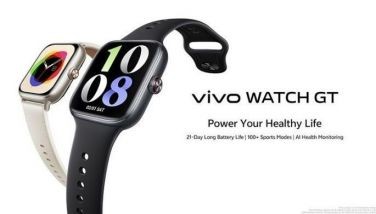Spotting trends that work

April 19, 2004 | 12:00am
The future is something we talk, worry, debate and theorize about more often than any other mundane or esoteric topics. And as we discuss the future with family, friends, colleagues and business associates, we would like to imagine and contemplate – word by word, sentence by sentence, idea by idea, jolt by jolt – the shape, sense, texture and experience of business and life tomorrow.
In the beginning of 2004, this column focused on some groundbreaking future words and phrases culled from the global trends surveyed and compiled by www.trendwatching.com. We have been introduced to new terminologies – gravanity, massclusivity, snobmoddity – and phraseologies – prosperity denial, jingle casting, global garage sales, resort rebirth and the like.
Today, we are in the third week of the first month of the second quarter of 2004. It is an opportune time to get inspired and revitalized by fantastically fresh ideas, consumer insights and behavioral trends spotted from all over the world, and see how they can be made useful to our own personal or professional undertakings. Trendwatching.com once again sent us the following words and phrases hopefully to rekindle our dreams, awaken our imagination, ignite our entrepreneurial spirit and move us from our stagnant state.
We complain about our busy lives, yet many indicators reveal that we actually enjoy doing everything at the same time – from simultaneously watching TV and surfing the Net, to doing business via cell phone while in the bathroom, while having coffee and lunch on the go, if not on our desks. These and other similar situations assume a new label called hypertasking, obviously influenced by the concept of computer multitasking.
An example of this evolving trend is Starbucks’ partnership with a mobile phone company, offering WiFi hotspots in most of its cafes, thereby empowering hypertasking customers to check e-mail, search for information, meet up with friends, conduct business meetings. The same phenomenon is happening in WiFi-enabled McDonald’s stores in the US, UK and Taiwan. Will the local fast-food market leader, Jollibee, be far behind? Let’s watch.
Campbell’s introduction of its "Soup at Hand" variant was, without a doubt, largely inspired by the hypertasking rage. The food company spotted the opportunity to get consumers to think of soup as a meal solution for many occasions, even on the go, while simultaneously performing three, or even more, other things. "Soup at Hand," as the report revealed was one of the most successful new product introduction in Campbell’s history. Nissin’s Cup Noodles and other local soup brands can take heed. A business development idea is waiting to be tapped.
The new widescreen, 17 inches or more laptop and personal computer monitors are gaining popularity fast, not just because they’re great for DVD viewing, but because they allow users to have two windows open side by side, surf two websites simultaneously, or work on a PowerPoint presentation on the left, while playing a multi-user game on the right. The high ownership of cell phones in many European and Asian countries is a clear and concrete testimony to the popularity of hypertasking. It allows us to connect to people in various ways – consciously choosing to communicate and interact whenever we want, most of all, do so while shopping or exercising, These are just some living examples of this vogue. And silently or loudly, we can say that hypertasking is a choice, not a punishment.
Where does the opportunity rest here? If we’re marketers or sales managers, start thinking in hypertasking terms whenever we’re trying to dream up new products and services to more versatile, on-the-go, in control consumers busy doing many things at once. Or come out with out-of-the box, fantastically fresh marketing and advertising campaigns that play to today’s multi-channel media consumption.
The need to simplify, put things in order and generate more quality time is a prevalent desire among us. This is dubbed as the "Daily Lubricant" phenomenon, where we see the rise of products and services that cater to consumers’ demand for simplicity, which literally lubricates daily life. The Trendwatching report cited the cases of The Container Store and Real Simple to illustrate the idea. The Container Store, a retail chain dubbed "the champion of organized life" recently opened a mega store in New York, the hypertasking capital of the world, bringing storage solutions to time and space starved citizens of the Big Apple. Its selling pitch was captured in the selling proposition – bright ideas for getting organized. This move completed the chain’s desire to become the number one player in this market. Can our own Anonymous chain achieve the same?
Real Simple on the other hand, is a US magazine that delivers tips and tricks on which products to buy to make their crazy schedules a lot more organized. The publication aims to balance the readers’ professional, family and community priorities with the importance of taking care of themselves. It is the only magazine for sale in all The Container Store outlets, available at each checkout counter. Indeed a neat ant smart partnership to push the common goal of making lives easier for their patrons. Calling Summit Publications and other local publishers. Coming out with a magazine dedicated to providing reference information for a simplified lifestyle may be a viable business proposition.
Simply put, it is placing in marketing focus the growing number of mature audiences with mature tastes – those who have the time and money to get their hands on top of the line indulgences. The Trendwatching file describes it as "a vital combination of mature consumers pursuing a seemingly restrained ‘best of the best’ materialism that is driving the trend in ditching mundane goods and services for more professional, premium or sassier versions."
Premium quality mattresses are hot in the US, as cash-rich baby boomers flock to specialty stores to get a "genuine high" in comfort for their tired and aging bodies. Haagen-Dazs’ maturalism-inspired desserts, available in adult flavors, Arnott’s (a biscuit brand) Kahlua-flavored mint slices and Tia Maria-tinged cookies, and Unilever’s Streets (an ice cream brand laced with non-alcoholic vodka flavor) are sterling cases of "products to get pampered with," aimed at a market with extremely deep pockets. They can give plenty of inspiration on how to add enhancements to our existing product line or launch a completely new variant that will appeal to a growing mature market.
This means we will get pizza from Pizzeria Uno on an American Airlines flight, or Starbucks Coffee, Mrs. Fields Cookies and a McDonald’s Friendly Skies Meal as we travel aboard United Airlines. It can also mean using premium beauty products from Aveda when we check into Westin Hotel, or luxurious Hermes toiletries available in Le Meridien.
Other inspiring branded brand initiatives include Nike actively promoting Cole Haan Shoes, a subsidiary, whose boots are powered by Nike Air Technology; Nickelodeon partnering with Holiday Inn Hotels and Resorts to develop the Nickolodeon-themed hotel; Philips and Unilever teaming up to bring the world a better ironing experience to launch the "Perfective" – an iron incorporating a especially developed cartridge containing an anti-crease agent, provided by "Robijn," one of Unilever’s garment care brands. Car brands aren’t immune either – Lexus proudly promotes their Mark Levinson audio systems. And when dining out, we will most likely find Haagen-Dazs ice cream on the menu of even upscale restaurants. It all points to consumers on the road increasingly wanting to find the brands they trust and enjoy at home being served in some unexpected venues.
Abig trend that covers our craving for immediate, fast online access anytime, anywhere. Millions of worldwide consumers are beginning to see getting connected electronically as an absolute necessity. Think broadband connection, WiFi and Centrino. Intel’s wireless chip, for example, will be installed in more than half of all new notebooks worldwide. WiFi promotions have been relentless in installing hot spots in thousands of locations like airports, cafes, bookstores, hotels and other commercial and public places.
Global figures on information and technology reveal staggering "Online Oxygen" facts and figures. A NFO WorldGroup research reveals that the Internet has overtaken TV as the most heavily used medium among teenage boys in Hong Kong, and America Online (AOL) has found that the Internet is now the primary communication tool for US teenagers. This was backed by an Edison Media Research data that says 34 percent of Americans chose the Internet as the most "cool and exciting medium."
An Ipsos-Reid survey asked Canadians the famous "desert island" question, in which respondents were asked what they would want to have with them in the event that they get stranded on a desert island. The majority (51 percent) of online Canadian families say they would bring their PC over their telephone (21 percent) and television (12 percent).
Forrester Research disclosed that almost 20 percent of Europeans seniors now have Internet access, and the latest survey indicates that the number of consumers older than 55 that are online has increased by 50 percent in two and a half years.
So are we ready to deal with consumers who thrive on Online Oxygen? Have we considered partnering in any shape or form with one of the new kids on the block, from cross media marketing companies to WiFi providers? Have we incorporated the opportunities and threats of broadband, wireless, and the popularity of being digital into our marketing, IT and distribution strategies?
The list above is meant to provoke, and make us support the workable ideas. Our revved-up world is fast changing, and we should be equally fast, if not faster in adjusting to the breakneck speed.
E-mail bongo@vasia.com or bongo@campaignsandgrey.net for comments, questions and suggestions. Thank you for your feedback.
In the beginning of 2004, this column focused on some groundbreaking future words and phrases culled from the global trends surveyed and compiled by www.trendwatching.com. We have been introduced to new terminologies – gravanity, massclusivity, snobmoddity – and phraseologies – prosperity denial, jingle casting, global garage sales, resort rebirth and the like.
Today, we are in the third week of the first month of the second quarter of 2004. It is an opportune time to get inspired and revitalized by fantastically fresh ideas, consumer insights and behavioral trends spotted from all over the world, and see how they can be made useful to our own personal or professional undertakings. Trendwatching.com once again sent us the following words and phrases hopefully to rekindle our dreams, awaken our imagination, ignite our entrepreneurial spirit and move us from our stagnant state.
An example of this evolving trend is Starbucks’ partnership with a mobile phone company, offering WiFi hotspots in most of its cafes, thereby empowering hypertasking customers to check e-mail, search for information, meet up with friends, conduct business meetings. The same phenomenon is happening in WiFi-enabled McDonald’s stores in the US, UK and Taiwan. Will the local fast-food market leader, Jollibee, be far behind? Let’s watch.
Campbell’s introduction of its "Soup at Hand" variant was, without a doubt, largely inspired by the hypertasking rage. The food company spotted the opportunity to get consumers to think of soup as a meal solution for many occasions, even on the go, while simultaneously performing three, or even more, other things. "Soup at Hand," as the report revealed was one of the most successful new product introduction in Campbell’s history. Nissin’s Cup Noodles and other local soup brands can take heed. A business development idea is waiting to be tapped.
The new widescreen, 17 inches or more laptop and personal computer monitors are gaining popularity fast, not just because they’re great for DVD viewing, but because they allow users to have two windows open side by side, surf two websites simultaneously, or work on a PowerPoint presentation on the left, while playing a multi-user game on the right. The high ownership of cell phones in many European and Asian countries is a clear and concrete testimony to the popularity of hypertasking. It allows us to connect to people in various ways – consciously choosing to communicate and interact whenever we want, most of all, do so while shopping or exercising, These are just some living examples of this vogue. And silently or loudly, we can say that hypertasking is a choice, not a punishment.
Where does the opportunity rest here? If we’re marketers or sales managers, start thinking in hypertasking terms whenever we’re trying to dream up new products and services to more versatile, on-the-go, in control consumers busy doing many things at once. Or come out with out-of-the box, fantastically fresh marketing and advertising campaigns that play to today’s multi-channel media consumption.
Real Simple on the other hand, is a US magazine that delivers tips and tricks on which products to buy to make their crazy schedules a lot more organized. The publication aims to balance the readers’ professional, family and community priorities with the importance of taking care of themselves. It is the only magazine for sale in all The Container Store outlets, available at each checkout counter. Indeed a neat ant smart partnership to push the common goal of making lives easier for their patrons. Calling Summit Publications and other local publishers. Coming out with a magazine dedicated to providing reference information for a simplified lifestyle may be a viable business proposition.
Premium quality mattresses are hot in the US, as cash-rich baby boomers flock to specialty stores to get a "genuine high" in comfort for their tired and aging bodies. Haagen-Dazs’ maturalism-inspired desserts, available in adult flavors, Arnott’s (a biscuit brand) Kahlua-flavored mint slices and Tia Maria-tinged cookies, and Unilever’s Streets (an ice cream brand laced with non-alcoholic vodka flavor) are sterling cases of "products to get pampered with," aimed at a market with extremely deep pockets. They can give plenty of inspiration on how to add enhancements to our existing product line or launch a completely new variant that will appeal to a growing mature market.
Other inspiring branded brand initiatives include Nike actively promoting Cole Haan Shoes, a subsidiary, whose boots are powered by Nike Air Technology; Nickelodeon partnering with Holiday Inn Hotels and Resorts to develop the Nickolodeon-themed hotel; Philips and Unilever teaming up to bring the world a better ironing experience to launch the "Perfective" – an iron incorporating a especially developed cartridge containing an anti-crease agent, provided by "Robijn," one of Unilever’s garment care brands. Car brands aren’t immune either – Lexus proudly promotes their Mark Levinson audio systems. And when dining out, we will most likely find Haagen-Dazs ice cream on the menu of even upscale restaurants. It all points to consumers on the road increasingly wanting to find the brands they trust and enjoy at home being served in some unexpected venues.
Global figures on information and technology reveal staggering "Online Oxygen" facts and figures. A NFO WorldGroup research reveals that the Internet has overtaken TV as the most heavily used medium among teenage boys in Hong Kong, and America Online (AOL) has found that the Internet is now the primary communication tool for US teenagers. This was backed by an Edison Media Research data that says 34 percent of Americans chose the Internet as the most "cool and exciting medium."
An Ipsos-Reid survey asked Canadians the famous "desert island" question, in which respondents were asked what they would want to have with them in the event that they get stranded on a desert island. The majority (51 percent) of online Canadian families say they would bring their PC over their telephone (21 percent) and television (12 percent).
Forrester Research disclosed that almost 20 percent of Europeans seniors now have Internet access, and the latest survey indicates that the number of consumers older than 55 that are online has increased by 50 percent in two and a half years.
So are we ready to deal with consumers who thrive on Online Oxygen? Have we considered partnering in any shape or form with one of the new kids on the block, from cross media marketing companies to WiFi providers? Have we incorporated the opportunities and threats of broadband, wireless, and the popularity of being digital into our marketing, IT and distribution strategies?
The list above is meant to provoke, and make us support the workable ideas. Our revved-up world is fast changing, and we should be equally fast, if not faster in adjusting to the breakneck speed.
BrandSpace Articles
<
>













